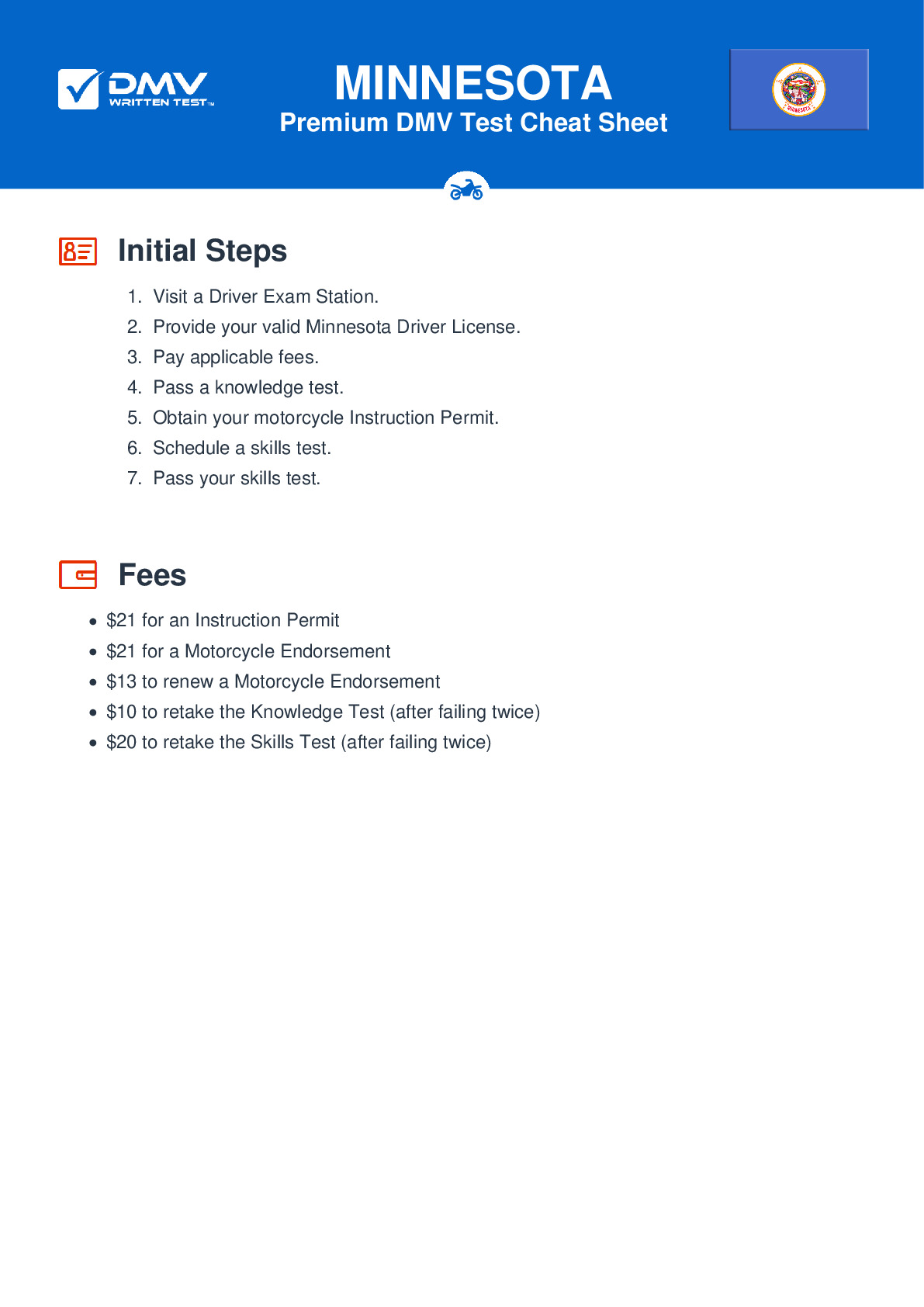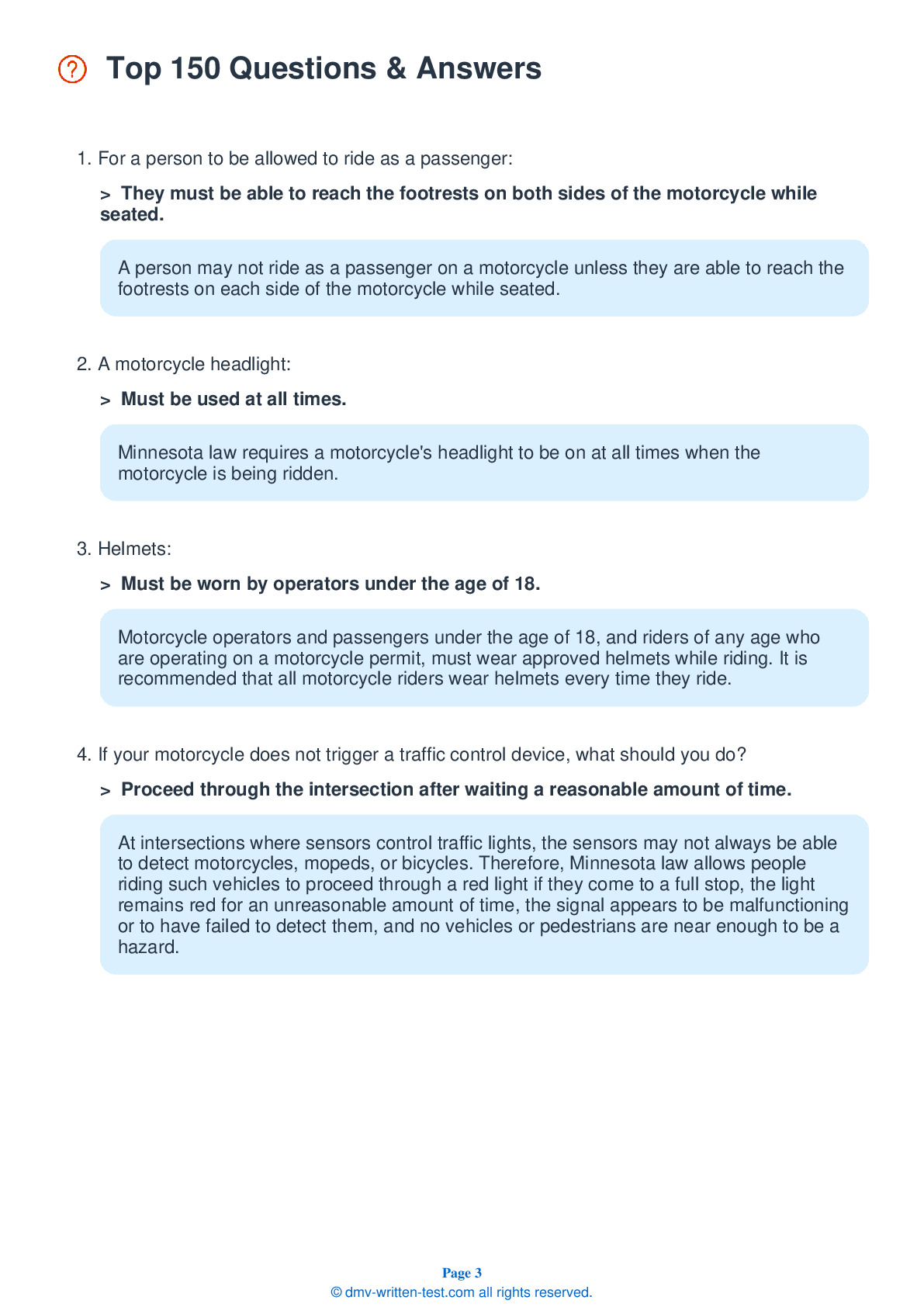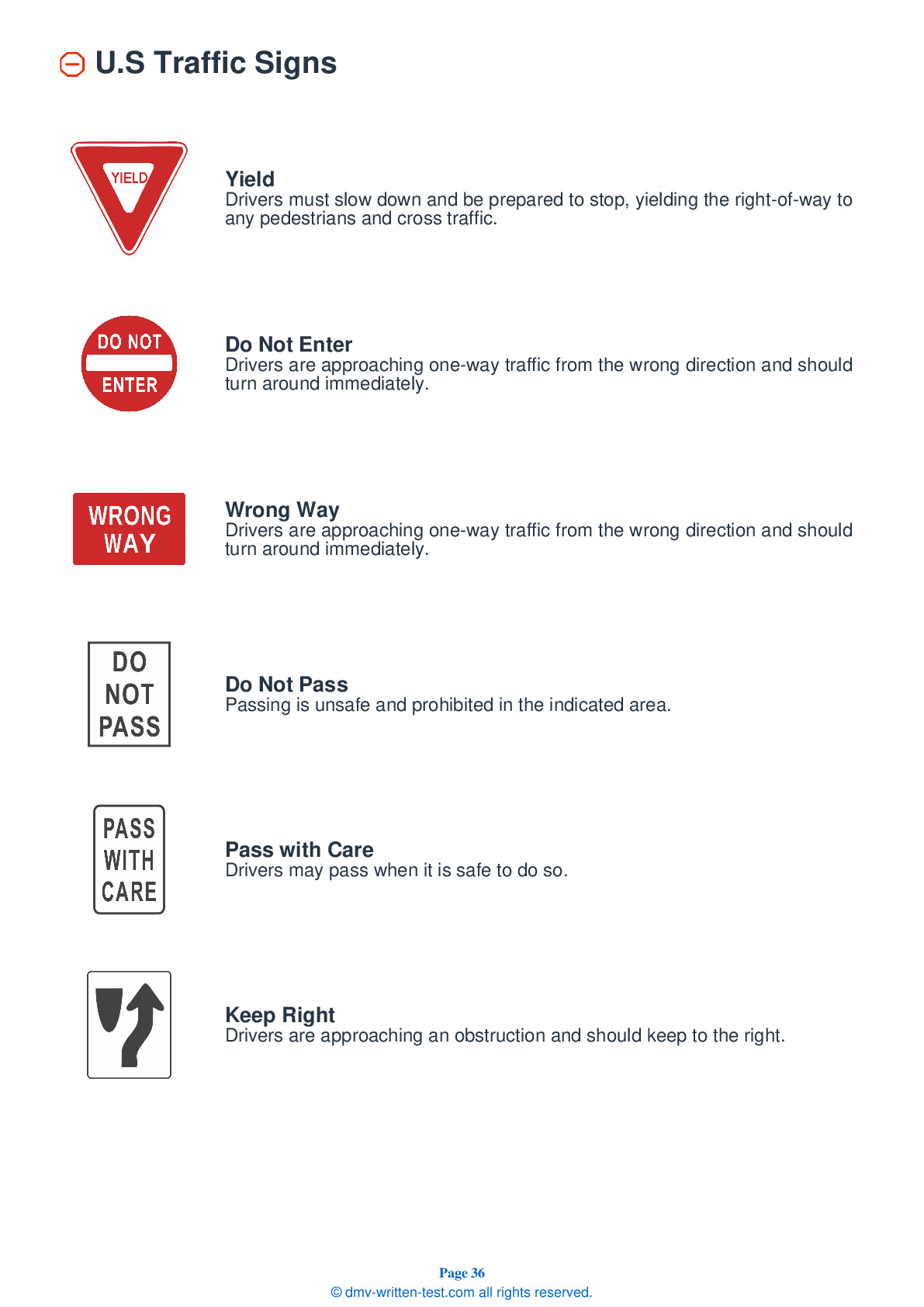2025 Minnesota Motorcycle Permit Test 10
The following questions are from real DMV written motorcycle permit tests. These are some of the actual permit questions you will face in Minnesota when getting your motorcycle learners permit. Each motorcycle theory practice test question has three answer choices. Select one answer for each question and select "grade this section." You can find this button at the bottom of the drivers license quiz. For a complete list of questions and answers for Minnesota please visit https://cheat-sheets.dmv-written-test.com/en/minnesota/motorcycle.
Number of Tests
Number of Question
Passing Score
9. A face shield:
Explanation
A plastic, impact-resistant face shield provides the greatest degree of protection for a wearer's eyes and face. Eyeglasses or sunglasses are not an adequate substitute. In Vermont, you are not legally required to wear eye or face protection if your motorcycle has a windshield, though it is recommended.
10. Of the crashes involving both a motorcycle and a car, how many are caused by the driver failing to properly yield the right-of-way to the rider?
Explanation
Of the crashes involving both a motorcycle and a car, more than half are caused by the driver failing to properly yield right-of-way to the rider.
11. When preparing to pass another vehicle on the left, which portion of the lane should you ride in?
Explanation
When preparing to pass another vehicle on its left, you should ride in the left portion of the lane to increase your line of sight and make yourself more visible to oncoming traffic.
12. Studies show that when motorcycles have their headlights turned on during the day:
Explanation
The best way to help other drivers see your motorcycle is to keep your headlight on whenever you ride. During the day, a motorcycle with its headlight on is twice as likely to be noticed.
13. Riding on the far side of a lane when following another vehicle:
Explanation
Most drivers do not look at their side mirrors as often as they look at their rearview mirror. Therefore, when following a car, it is generally best to ride in the center portion of the lane where you are most likely to be visible in the driver's rearview mirror.
14. If a tire goes flat and you must brake, you should:
Explanation
If either of your tires go flat and you must brake, gradually apply the brake of the tire that is not flat (if you are certain of which tire that is).
15. You should increase your following distance if:
Explanation
An expanded cushion of space is needed if your motorcycle will take longer than normal to stop. If the pavement is slippery, if you cannot see through the vehicle ahead of you, or if traffic is heavy and another driver may try to squeeze in front of you, open up to a larger following distance.
16. A passenger should never:
Explanation




